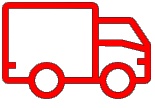Understanding your junk car value before entering the marketplace can mean the difference between receiving fair compensation and accepting a lowball offer that significantly undervalues your vehicle. Many owners assume their non-running or damaged vehicles have minimal worth, but the reality is that multiple factors contribute to vehicle values that extend far beyond simple scrap metal pricing.
Learning how much is my junk car worth requires evaluating various components, market conditions, and vehicle characteristics that professional buyers consider when making offers.
The process to value junk truck or car involves understanding both the baseline scrap metal worth and the additional value created by reusable parts, valuable materials, and current market demand.
Professional buyers use sophisticated evaluation methods that consider dozens of factors, and informed sellers who understand these valuation principles can negotiate more effectively and identify buyers offering genuinely competitive prices versus those attempting to exploit uninformed sellers.
Understanding Baseline Scrap Metal Value
The foundation of junk car value begins with the vehicle’s scrap metal content, which provides a minimum worth regardless of condition or functionality. Most vehicles contain 2,000-4,000 pounds of steel, with larger trucks and SUVs weighing significantly more. Current scrap steel prices, which fluctuate based on global commodity markets, directly impact this baseline value.
Steel comprises approximately 65-70% of most vehicles’ weight, making steel prices the primary driver of scrap value calculations. However, vehicles also contain aluminum components including engine blocks, radiators, wheels, and body panels that command higher per-pound prices than steel. A typical car contains 200-400 pounds of aluminum, while trucks often contain even more.
Copper wiring, brass fittings, and other non-ferrous metals contribute additional value despite representing smaller portions of total vehicle weight. These materials command premium prices due to their conductivity and corrosion resistance properties that make them valuable for various industrial applications.
Current scrap metal prices vary by region and market conditions, but understanding approximate values helps establish realistic expectations. Steel typically sells for $100-$300 per ton, while aluminum brings $800-$1,500 per ton, and copper can exceed $3,000 per ton. These price differences explain why vehicles with substantial aluminum or copper content often exceed basic scrap calculations.
Evaluating Parts and Component Values
Beyond scrap metal worth, how much is my junk car worth depends heavily on the resale value of individual components that can be removed and sold separately. Catalytic converters represent the most valuable single component in many vehicles, containing precious metals like platinum, palladium, and rhodium worth hundreds or thousands of dollars.
Catalytic converter values vary dramatically based on vehicle type, with some hybrid vehicles containing converters worth $2,000-$3,000, while others might be worth only $50-$200. The size, age, and specific emissions requirements of your vehicle determine catalytic converter value, making research essential for accurate valuation.
Airbag systems, including sensors, control modules, and the airbags themselves, maintain strong resale values ranging from $200-$1,500 depending on vehicle type and system complexity. Newer vehicles with advanced safety systems typically have more valuable airbag components than older, simpler systems.
Electronic control units (ECUs), navigation systems, and infotainment components can be worth hundreds or thousands of dollars, particularly in luxury or newer vehicles. These sophisticated electronics maintain value because they’re expensive to replace and often interchangeable between similar vehicle models.
Engine and transmission values depend on condition, mileage, and market demand. Running engines from popular vehicles might be worth $1,000-$5,000 or more, while non-running engines still have value for rebuilding or core exchange programs. Diesel engines typically maintain higher values than gasoline engines due to their durability and commercial applications.
Vehicle-Specific Valuation Factors
Different vehicle types command different values when determining value junk truck versus passenger car pricing. Trucks generally weigh more than cars, providing higher baseline scrap values, but they also contain components that often have stronger resale markets due to commercial and recreational applications.
Pickup trucks with four-wheel-drive systems contain valuable transfer cases, differentials, and axles that maintain strong demand for repair and upgrade applications. These drivetrain components can add hundreds or thousands of dollars to vehicle values even when the truck is otherwise beyond repair.
Commercial vehicles and heavy-duty trucks often contain specialized equipment, hydraulic systems, or commercial-grade components that have value in fleet maintenance and repair markets. Box trucks, delivery vehicles, and work trucks may have equipment worth more than the base vehicle value.
Luxury vehicles typically contain more valuable components than economy cars, including premium electronics, leather interiors, and sophisticated mechanical systems. However, luxury vehicle parts markets can be more specialized, potentially affecting liquidity and pricing.
Classic or collectible vehicles, even in poor condition, might have restoration value that exceeds scrap worth. Original components from desirable vehicles can command premium prices among enthusiasts and restoration specialists.
Market Demand and Regional Factors
Junk car value fluctuates based on local market conditions, seasonal demand patterns, and regional economic factors that affect both scrap metal prices and parts demand. Understanding these influences helps optimize timing and identify the best buyers for your specific vehicle.
Construction activity levels significantly impact scrap steel demand and pricing. Regions with active construction industries typically offer higher scrap prices, while economic downturns can depress metal values substantially. Monitoring local construction activity provides insights into market timing.
Parts demand varies by region based on the local vehicle population and repair industry characteristics. Areas with many older vehicles create strong demand for replacement parts, while regions with newer vehicle fleets might have less parts demand but higher scrap metal consumption.
Seasonal factors affect both scrap metal and parts markets. Winter weather can reduce construction activity and scrap demand, while spring construction seasons often drive up metal prices. Parts demand may increase before winter as vehicle owners prepare for harsh weather conditions.
Competition levels among local buyers significantly impact pricing. Areas with multiple competing buyers typically offer better prices than markets dominated by single large operators. Researching local buyer density helps identify competitive market conditions.
Condition Assessment and Honest Evaluation
Accurately assessing your vehicle’s condition is crucial for realistic value expectations when determining how much is my junk car worth in current market conditions. Honest evaluation prevents disappointment and helps identify the most appropriate buyers for your specific situation.
Running condition significantly impacts value, as operational vehicles have parts that can be tested and verified before removal. Non-running vehicles still have value, but buyers may discount offers to account for unknown mechanical issues or additional processing requirements.
Body condition affects parts recoverability and processing costs. Vehicles with extensive rust, accident damage, or missing components require more labor to process and yield fewer sellable parts, potentially reducing overall value.
Interior condition influences value for vehicles with leather seating, advanced electronics, or specialty features that maintain resale markets. However, interior condition typically has less impact than mechanical factors for true junk vehicle valuations.
Tire condition can add value, particularly for vehicles with newer, high-quality tires that can be resold separately. Similarly, functional batteries, especially newer or specialty batteries, contribute additional value beyond the vehicle’s base worth.
Research Tools and Valuation Resources
Several online tools and resources can help estimate junk car value by providing market data, scrap metal prices, and parts values for specific vehicles. While these tools provide useful starting points, they should be supplemented with local market research for accurate valuations.
Scrap metal price tracking websites provide current commodity pricing that helps establish baseline values. However, local prices may vary from national averages due to transportation costs, regional demand, and processing facility availability.
Auto parts pricing websites enable research of specific component values by showing retail prices for replacement parts. While junk parts sell for fractions of retail prices, these resources help identify which components have the highest value potential.
Vehicle specification databases help identify exact engine types, transmission configurations, and equipment packages that affect parts values. Accurate specification information is essential for precise valuation, as similar-looking vehicles may have significantly different component values.
Online forums and enthusiast communities provide insights into parts demand and pricing for specific vehicle types. Classic car, truck, and specialty vehicle communities often have detailed knowledge about component values and market conditions.
Getting Professional Assessments
While self-assessment provides valuable insights, professional evaluations from experienced buyers offer the most accurate value junk truck or car estimates. Multiple professional assessments help identify fair market values and competitive pricing.
Mobile assessment services provide detailed evaluations by bringing expertise directly to your vehicle’s location. These services typically offer the most accurate valuations but may charge fees or require minimum value thresholds.
Salvage yard assessments leverage extensive experience with vehicle processing and parts markets. Established salvage operations often provide realistic valuations based on their actual processing costs and revenue potential.
Online quote services offer convenient preliminary valuations, though accuracy may be limited without physical inspection. These services work best for standard vehicles in typical conditions rather than unique or specialty vehicles.
Multiple quote comparison helps identify fair market ranges and competitive buyers. Obtaining at least three quotes provides perspective on market conditions and helps identify unusually high or low offers that warrant investigation.
Maximizing Your Vehicle’s Value
Understanding valuation factors enables strategic decisions that can increase your vehicle’s worth. Timing sales during favorable market conditions, highlighting valuable components, and working with appropriate buyers all impact final returns.
Removing valuable aftermarket accessories or personal modifications might increase total returns if these items have independent resale value exceeding their contribution to vehicle worth. However, removal costs and effort must be considered in this analysis.
Cleaning and organizing vehicles demonstrates care and professionalism that often results in higher offers from buyers who appreciate working with prepared sellers. Simple preparation rarely costs much but can improve buyer perceptions significantly.
Documenting valuable components, recent repairs, or maintenance history helps justify higher offers when buyers might not immediately recognize value factors. Maintenance records and receipts provide credibility that supports premium pricing requests.
Conclusion
Determining accurate junk car value requires understanding multiple factors including scrap metal content, parts values, market conditions, and vehicle-specific characteristics. While baseline scrap values provide minimum worth estimates, additional value from components and current market demand often significantly exceeds these minimums.
Success in vehicle valuation combines research, honest assessment, and market awareness to establish realistic expectations and identify competitive buyers. Understanding how much is my junk car worth empowers better decision-making and more effective negotiations that maximize returns while ensuring fair, professional transactions.
The key to accurate valuation lies in comprehensive evaluation that considers all value sources while maintaining realistic expectations based on current market conditions and vehicle-specific factors.


